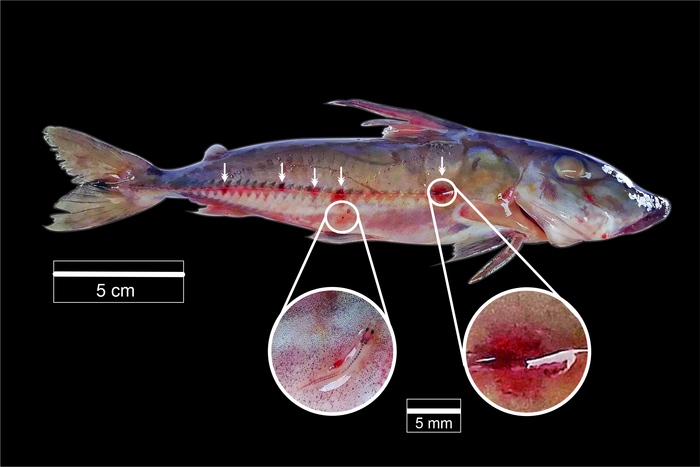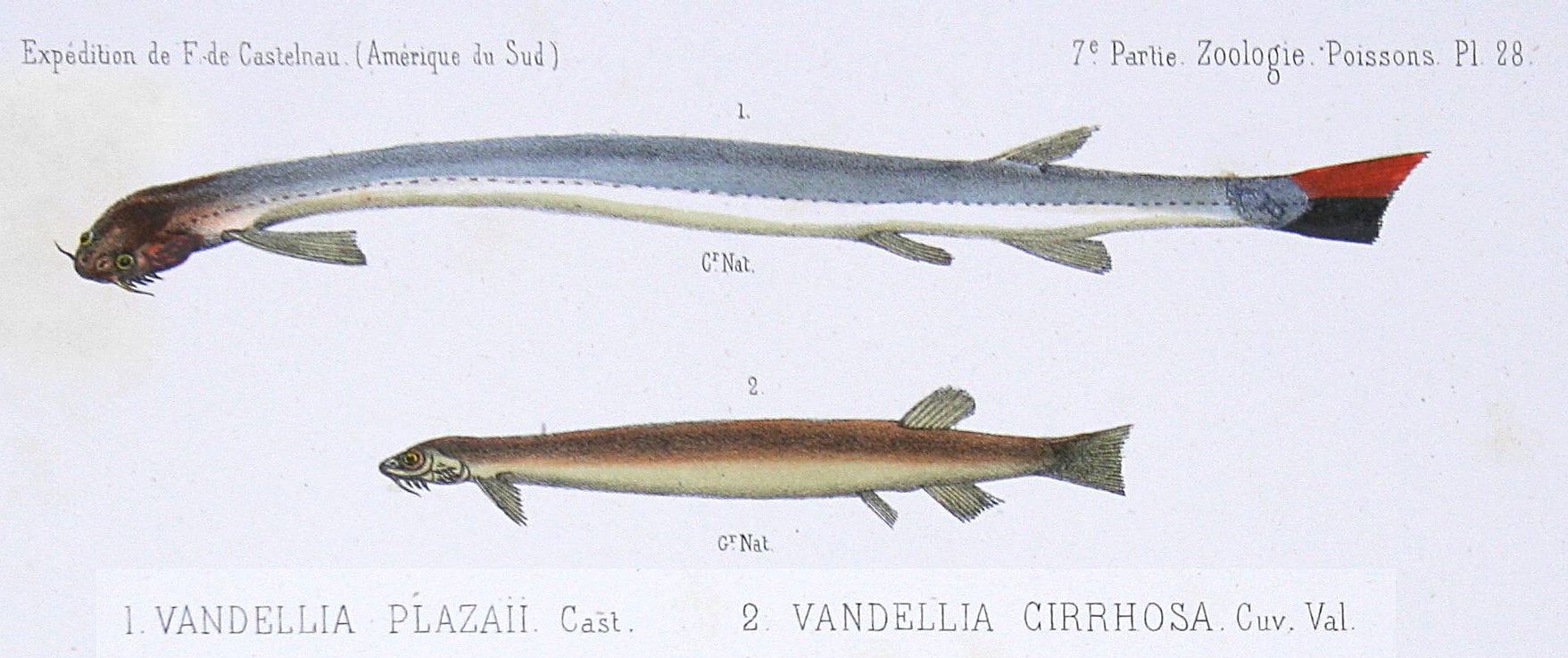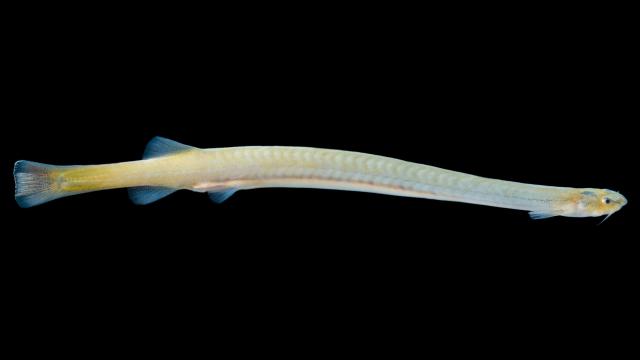The Amazon River basin’s most notorious bloodsuckers may not be all drama and gore after all. New findings suggest that some candiru — the vampire fish — may have a more benign relationship with their host fishes, using the hosts’ bodies as transportation or protection from predators.
Candiru fish have a bit of a reputation. The tiny, wormy, nearly transparent catfish slide through murky Amazonian waters, wriggling their narrow heads into the gills of much larger fish. There, they latch on with strong teeth and guzzle blood like some kind of tick/glass noodle hybrid. The fish are perhaps most infamous for tales in which they are attracted to the urine of people peeing in the river and swim up their urethras, becoming horrifically embedded. (Hard evidence for this nightmare is more than a little dubious, and candiru don’t actually yearn for our pee.)
But the nine or so species of candiru (subfamily Vandelliinae) are certainly vampires, superbly adapted to sipping off their neighbours’ circulatory systems. So when researchers discovered candiru being decidedly more Mr. Rogers than Count Dracula, it came as a surprise.
In April 2019, Chiara Lubich — an ichthyologist at the Federal University of Amazonas in Manaus, Brazil — and colleagues were surveying and collecting fish species in the Rio Negro, a major tributary river of the Amazon. As the team was removing and measuring fish caught in their nets, they saw something peculiar clinging to the sides of a species of thorny catfish (Doras phlyzakion). Several inch-long candiru — later identified in the genus Paracanthopoma — studded the trout-sized catfish’s armoured flanks, an odd location for a parasite that typically makes a beeline for the vulnerable gills. The team found more: nine thorny catfish in total, with a dozen candiru stuck on.

The researchers brought the candiru into the lab and looked at their stomach contents with a microscope, wondering if the parasites were feeding on the larger catfish from the sides of their bodies. But they found a whole lot of nothing. No blood, skin, flesh, or mucus.
The findings — published in the journal Acta Ichthyologica et Piscatoria — suggest that the candiru may have not been feeding at all, just hanging on like remoras on a shark.
“Apparently, [the candiru] hook up and travel with the host for reasons other than food,” says Lubich.
Such a benign interaction between candiru and larger fish may mean the wee vampires have a more varied and complex relationship with hosts than previously appreciated, and they are likely deriving some key benefit beyond just catfish-on-catfish cuddles.
The candiru may be exploiting their hosts’ size and strong swimming abilities, using their bodies as taxis to travel distances in the river that would be unattainable if they tried to swim solo. Also, since candiru are a little see-through, being pressed up against a bigger fish’s body may make it harder for predators to spot them.
Larry Page, an ichthyologist at the Florida Museum of Natural History in Gainesville not involved with this research, is intrigued by the idea that the candiru are using bigger fish as transportation.
“It seems to me to be a plausible explanation,” said Page, pointing out that Lubich’s team didn’t necessarily rule out the possibility that the candiru do sometimes feed on the host’s skin. “But it seems likely that they are using the larger fish to move long distances, or perhaps they are doing both: feeding and hitching a ride.”
There may be “marked variation” in the eating habits of the candiru subfamily, said Lubich, of which Paracanthopoma is but one part. Some species have been found with their heads buried in a host’s abdominal cavity. Others appear to also eat scales, mucus, and even a bit of their host’s flesh. Paracanthopoma itself has the longest and strongest snout among candiru, said Lubich, which — along with gripping teeth — may help it grasp the sides of larger fish.

Lubich points out, however, that it is possible the clinging may be related to how the thorny catfish were caught. The fish were stuck in the net for hours before the team could retrieve them. Candiru can sense when a host is injured or otherwise indisposed and take advantage of the situation, explained Lubich.
Whatever the case, it’s clear that there’s more to the biology of these strange little parasites than just bloodthirsty deviousness.
“I believe that much remains to be answered and known about this relationship, not only with thorny catfish, but the relationship between vampire fish and other species that we have not yet encountered and have not been reported on,” said Lubich.
